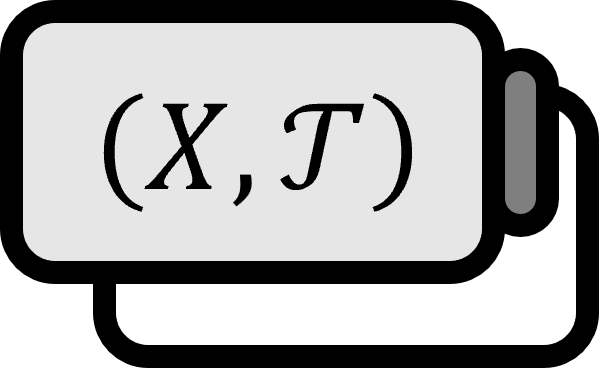Topologist's Sine Curves and Metric Spaces
Definition 1

- The curve defined as follows $S$ is called the Topologist’s Sine Curve. $$ S : = \left\{ (0,y) \ | \ y \in [-1,1] \right\} \cup \left\{ \left. \left( x, \sin {{1} \over {x}} \right) \ \right| \ x \in (0,1] \right\} $$
- The space defined as follows $C$ is called the Topologist’s Comb Space. $$ C := \left\{ (0,y) \ | \ y \in [0,1] \right\} \cup \left\{ (x,0) \ | \ x \in [0,1] \right\} \cup \left\{ \left( {{1} \over {n}} , y \right) \ | \ y \in [0,1] , n \in \mathbb{N} \right\} $$
Explanation
It is better to remember these spaces by their pictures rather than the mathematical expressions. As their names suggest, they exhibit interesting properties in topology and are useful as counterexamples for various propositions.
Sine Curve
- [1]: $S$ is connected but neither path-connected nor locally connected.
One might think that drawing the sine curve from $1$ to $0$ would inevitably touch the $y$ axis. However, as one gets closer, the trajectory becomes increasingly erratic near $[-1,1]$, making it impossible to find a path that directly connects them.
Comb Space
- [2]: $C$ is path-connected but not locally connected.
The comb space is connected through segments on the $x$ axis but cannot become locally connected in any open space along the $y$ axis.
Code
Additionally, here is the R code used for drawing the figures in this post.
win.graph(7,3.5)
par(mfrow=c(1,2))
X = seq(0.0001,2,0.0001)
plot(X,sin(1/X),ylim=c(-1,1),type='l',xlim=c(0,1),main='(1) 위상수학자의 사인 곡선',xlab=NA,ylab=NA)
segments(0,0,0,1)
plot(NA,ylim=c(0,1),type='l',xlim=c(0,1),main='(2) 위상수학자의 빗 공간',xlab=NA,ylab=NA)
segments(0,0,1,0)
segments(0,0,0,1)
segments(1/1:1000,0,1/1:1000,1)
Munkres. (2000). Topology(2nd Edition): p157. ↩︎
